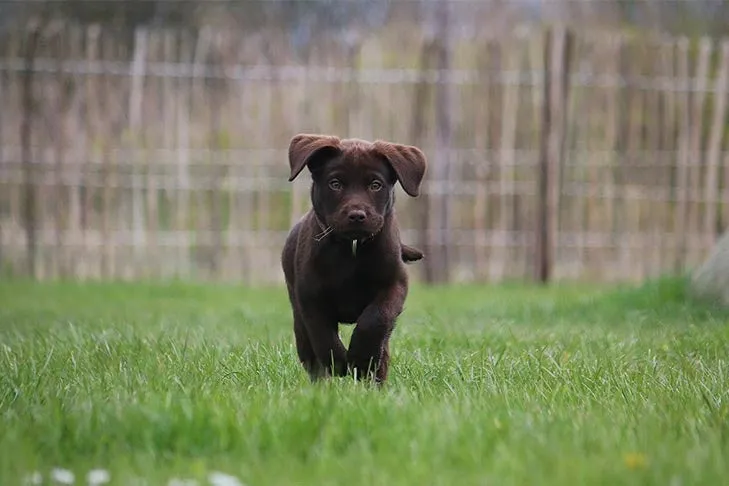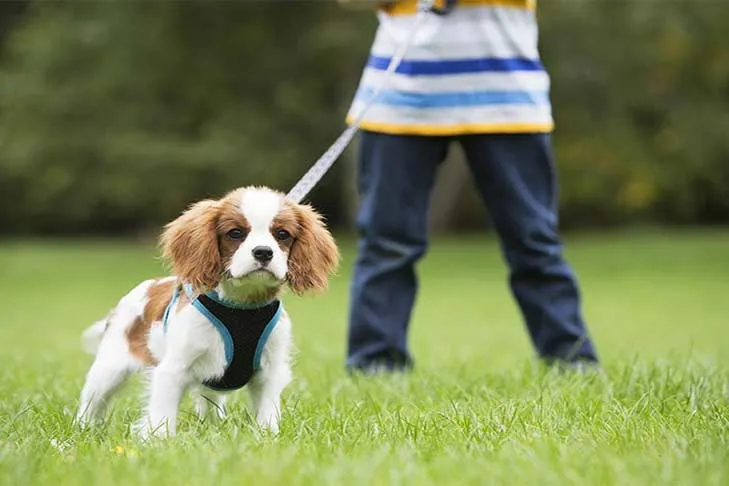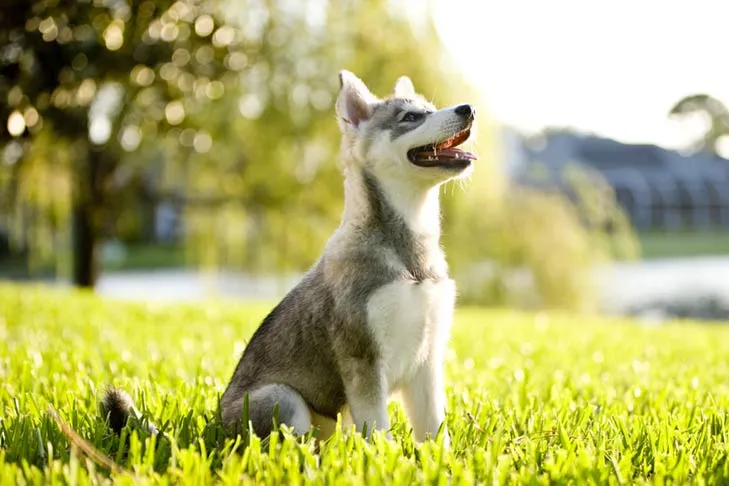Teaching your puppy to come when called, often referred to as a “recall,” is one of the most crucial commands you can impart. It’s not just a parlor trick; a reliable recall can be a lifesaver, ensuring your puppy’s safety in unexpected situations and strengthening the bond between you. This skill allows your dog to enjoy more freedom while providing you with peace of mind. Mastering this fundamental command requires patience, consistency, and a positive approach, making training sessions enjoyable and effective for both you and your furry companion. Understanding how to teach come to a puppy from an early age sets the stage for a lifetime of good behavior and responsiveness.
Building a Strong Foundation for Puppy Training
Effective puppy training hinges on a few core principles that pave the way for successful learning, especially for essential commands like “come.” When you begin training, your puppy needs to clearly understand your expectations. Providing this clarity helps puppies feel secure and confident in their ability to meet the goals you set. The foundation of any good training program, including how do i teach my puppy to come, should always be based on positive reinforcement.
Positive reinforcement is a training method where you reward your dog for performing a desired behavior, thereby encouraging them to repeat it. The goal is to motivate your puppy with something they highly value, not to bribe them into compliance. This approach builds a strong, trusting relationship and makes learning a fun, rewarding experience. Conversely, it’s vital to avoid punishment, such as yelling or leash corrections. Punishment can confuse and frighten puppies, making them hesitant and unsure of what’s being asked. Remember, puppies are learning about our world for the first time; patience and understanding are paramount. We wouldn’t expect a toddler to tie their shoes without instruction, so we shouldn’t expect our puppies to instinctively understand human commands.
Reinforcement can take many forms, depending on what your puppy loves most. High-value food treats, like small pieces of freeze-dried liver or even their regular kibble, are often used because they are convenient and highly motivating. Lavish verbal praise, delivered in an enthusiastic voice, is also an excellent reward, especially when paired with a treat so your puppy learns to associate praise with positive outcomes. Some dogs also enjoy petting or a short play session with a favorite toy. The key is to find what truly motivates your individual puppy and use it consistently. Puppy training sessions should always be brief, typically five to ten minutes, and conclude on a positive note. If your puppy struggles with a new concept, revert to a command they already know, reward them generously, and end the session there. This keeps learning enjoyable and prevents boredom or frustration, which can be counterproductive to progress.
 Energetic Labrador puppy running through grass near a fence
Energetic Labrador puppy running through grass near a fence
The Essential “Come” Command: Step-by-Step Training
Teaching your puppy a reliable recall is a cornerstone of responsible dog ownership. It allows your puppy to explore safely and return to you without hesitation. Begin this training in a calm, distraction-free indoor environment.
Phase 1: Indoor Introduction and Name Recognition
- Name and Treat Association: Start by sitting close to your puppy. Gently say their name or the cue “come,” and immediately give them a high-value treat. At this stage, your puppy doesn’t need to do anything but hear the word and receive a reward. Repeat this several times. The goal is for them to associate their name or “come” with something positive and exciting.
- Looking Up and Engagement: Next, drop a treat on the floor near you. As soon as your puppy finishes eating it, say their name again. The moment they look up at you, reward them with another treat and praise. Repeat this, gradually tossing the treat a little further away, ensuring they turn to face you when you call their name. If your puppy doesn’t respond, move closer and go back to a step where they were successful. Avoid repeating their name multiple times without a response, as this can teach them to ignore it. Building a strong foundation for teaching puppy to come to you starts with these simple, positive interactions.
Phase 2: Introducing Movement and Fun
- Making it a Game: Once your puppy consistently turns to face you, it’s time to add movement and make the exercise more engaging. Toss a treat on the ground, then take a few quick steps backward or to the side while calling your puppy’s name. Most puppies will naturally chase after you, finding the movement exciting and fun.
- Generous Rewards: When your puppy catches up, greet them with enthusiastic praise, a handful of treats, or a quick game with a favorite tug toy. The key is to make coming to you the most rewarding experience possible. Your puppy should view “come” as a thrilling game that always ends with something fantastic. Continually reinforce this idea, expanding the distance and varying the game to keep it fresh and exciting.
Phase 3: Gradual Distraction and Outdoor Practice
- Increasing Distance and Location: As your puppy grows more confident indoors, gradually increase the distance you move away from them before calling. Then, move to slightly more distracting indoor environments. When you’re ready to train outside, always begin in a safe, enclosed area, such as a fenced yard. Using a long leash can be incredibly helpful during this transition, allowing you to maintain control while giving your puppy a sense of freedom. Remember, the outdoor world is full of novel sights, sounds, and smells, so start simple and gradually introduce distractions. This progressive approach is essential for teaching a puppy to come on command reliably in various settings.
- Positive Reinforcement for Return: When your puppy comes to you outdoors, especially amidst distractions, make the reward even higher value. This reinforces that returning to you is always the best choice, regardless of what else might be happening around them.
 Cavalier King Charles Spaniel puppy learning to walk on a loose leash outdoors
Cavalier King Charles Spaniel puppy learning to walk on a loose leash outdoors
Maximizing Success and Avoiding Common Mistakes
To ensure your puppy develops a fast and joyful recall, keep these crucial tips in mind throughout your training journey. The success of how to teach your puppy to come and stay relies heavily on consistent, positive reinforcement and understanding your puppy’s learning pace.
One common mistake to avoid is reaching out and grabbing your puppy as they approach. For some dogs, especially those who are timid, this can be frightening or confusing, turning the positive experience of coming to you into a negative one. Instead, when your puppy comes near, kneel down and face them sideways, offering treats gently. This open body posture is less intimidating and encourages them to come all the way to you for their reward. Once they are comfortable, you can gently reach for their collar while still providing treats, slowly desensitizing them to being handled.
Another pitfall is using “come” only when something negative is about to happen, such as bath time, a vet visit, or ending a fun play session. If “come” consistently leads to something undesirable, your puppy will quickly learn to avoid it. Instead, call your puppy to you frequently throughout the day for positive interactions – a treat, a quick cuddle, or a game – then release them to go back to what they were doing. This builds a strong positive association with the “come” command.
Consistency is key. Everyone in the household should use the same “come” cue and the same positive reinforcement methods. If different people use different words or techniques, your puppy will become confused and their learning will be delayed. Always keep training sessions short, fun, and end on a high note. If your puppy is struggling, make the exercise easier or revert to a known command for a success. Frustration from either party will only hinder progress. Evaluating the “paycheck” for your puppy – meaning the value of the reward – is also crucial. For harder exercises or highly distracting environments, ensure your reward is high-value enough to motivate your puppy to choose you over other temptations.
Patience is perhaps the most important ingredient. Puppy training is a journey, not a race. There will be days when your puppy seems to forget everything they learned, and that’s perfectly normal. Celebrate small victories, adjust your approach when needed, and always maintain a positive attitude. With consistent, reward-based training, your puppy will develop a reliable recall, making them a safer, happier, and more cherished member of your family.
 An Alaskan Klee Kai puppy attentively sitting in green grass during a training session
An Alaskan Klee Kai puppy attentively sitting in green grass during a training session
Maximizing Success and Avoiding Common Mistakes
To ensure your puppy develops a fast and joyful recall, keep these crucial tips in mind throughout your training journey. The success of how to teach your puppy to come and stay relies heavily on consistent, positive reinforcement and understanding your puppy’s learning pace.
One common mistake to avoid is reaching out and grabbing your puppy as they approach. For some dogs, especially those who are timid, this can be frightening or confusing, turning the positive experience of coming to you into a negative one. Instead, when your puppy comes near, kneel down and face them sideways, offering treats gently. This open body posture is less intimidating and encourages them to come all the way to you for their reward. Once they are comfortable, you can gently reach for their collar while still providing treats, slowly desensitizing them to being handled.
Another pitfall is using “come” only when something negative is about to happen, such as bath time, a vet visit, or ending a fun play session. If “come” consistently leads to something undesirable, your puppy will quickly learn to avoid it. Instead, call your puppy to you frequently throughout the day for positive interactions – a treat, a quick cuddle, or a game – then release them to go back to what they were doing. This builds a strong positive association with the “come” command.
Consistency is key. Everyone in the household should use the same “come” cue and the same positive reinforcement methods. If different people use different words or techniques, your puppy will become confused and their learning will be delayed. Always keep training sessions short, fun, and end on a high note. If your puppy is struggling, make the exercise easier or revert to a known command for a success. Frustration from either party will only hinder progress. Evaluating the “paycheck” for your puppy – meaning the value of the reward – is also crucial. For harder exercises or highly distracting environments, ensure your reward is high-value enough to motivate your puppy to choose you over other temptations.
Patience is perhaps the most important ingredient. Puppy training is a journey, not a race. There will be days when your puppy seems to forget everything they learned, and that’s perfectly normal. Celebrate small victories, adjust your approach when needed, and always maintain a positive attitude. With consistent, reward-based training, your puppy will develop a reliable recall, making them a safer, happier, and more cherished member of your family.
 A Staffordshire Bull Terrier puppy calmly lying down on a soft outdoor blanket
A Staffordshire Bull Terrier puppy calmly lying down on a soft outdoor blanket
Conclusion
Teaching your puppy to come when called is more than just a command; it’s an investment in their safety, your peace of mind, and the strength of your bond. By consistently applying positive reinforcement, keeping training sessions short and enjoyable, and gradually increasing distractions, you can build a reliable recall that will last a lifetime. Remember to be patient, celebrate every small success, and always make coming to you the most rewarding choice for your puppy. A reliable recall empowers your puppy to explore their world with confidence, knowing they can always return to you for safety and affection. Embark on this rewarding training journey with your puppy, and watch as they transform into a well-behaved, responsive, and joyful companion. Consider enrolling in programs like AKC S.T.A.R. Puppy for a structured approach to foundational skills, setting your puppy up for lifelong good behavior.
